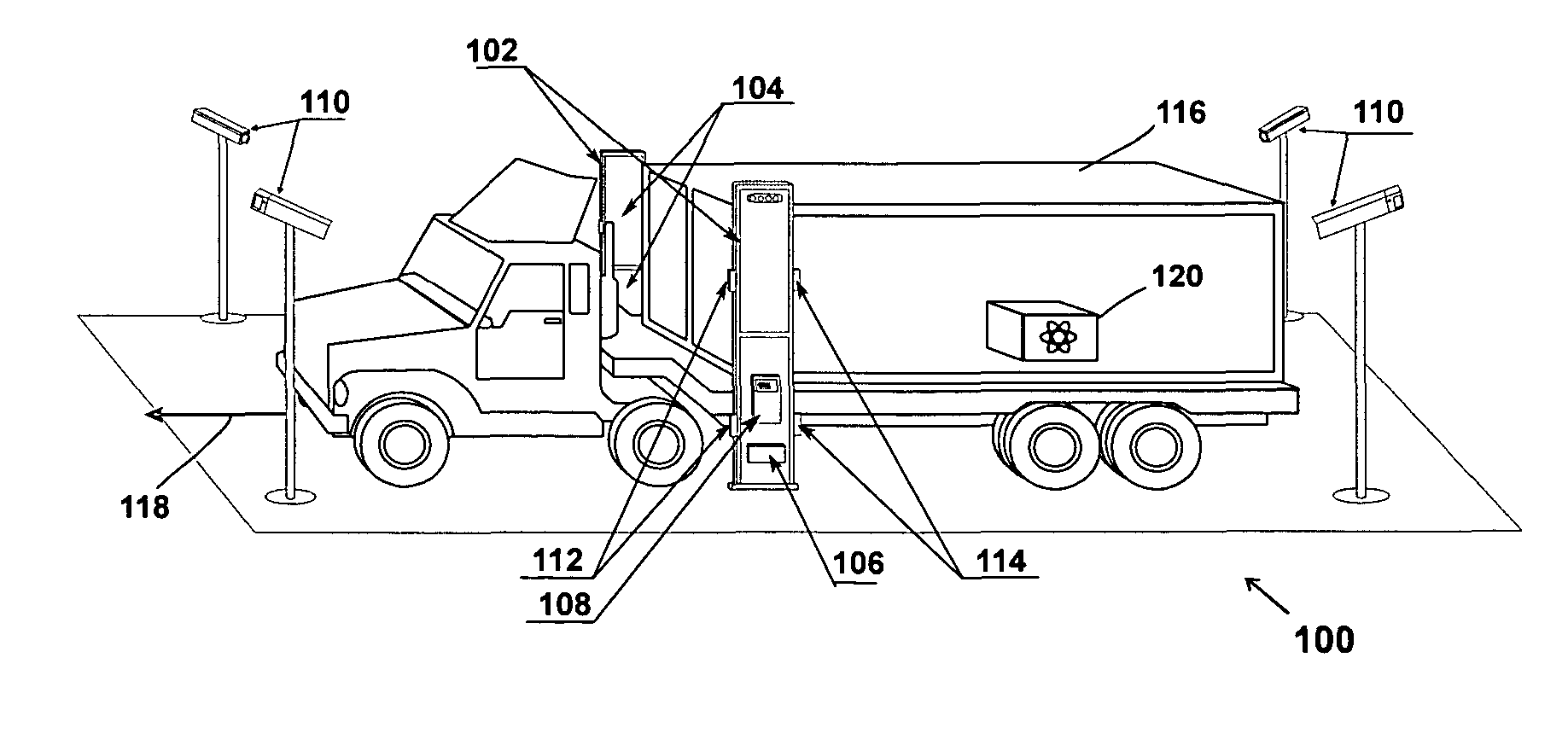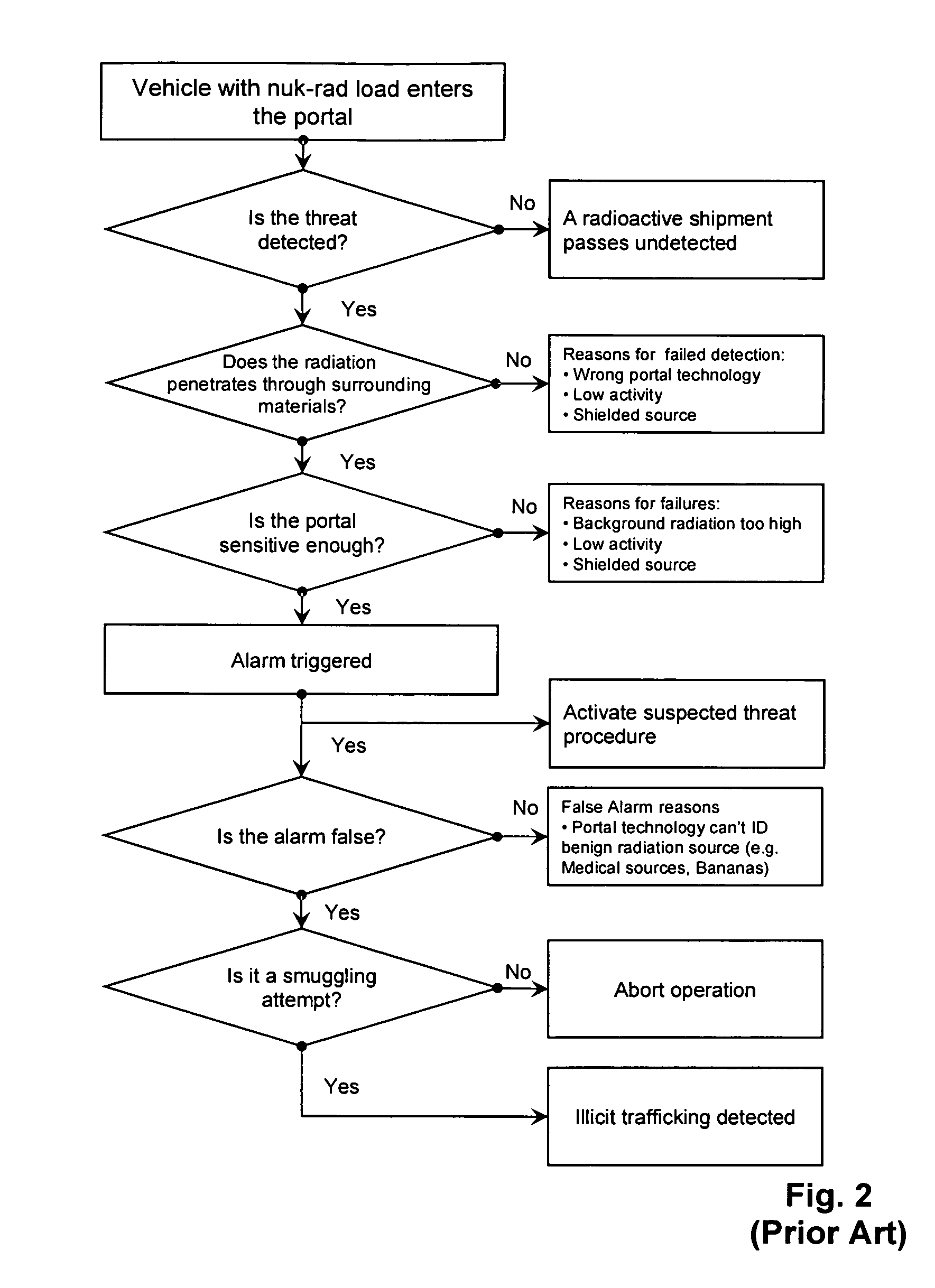Detection of nuclear materials
a nuclear material and detection technology, applied in the field of nuclear material detection, can solve the problems of high false alarm rate, inefficient process of photon emission, and inability to return the atom to the lower energy state with the emission of photons, so as to achieve the effect of improving performance and reducing cos
- Summary
- Abstract
- Description
- Claims
- Application Information
AI Technical Summary
Benefits of technology
Problems solved by technology
Method used
Image
Examples
Embodiment Construction
Exemplary Architecture
[0182]An exemplary architecture of a detection system portal 100 according to some aspects of the invention is shown in FIG. 12. This embodiment includes two support stands 102, one on each side of the portal's lane, at least one and preferably both having at least one radiation detection panel 104. Each such panel includes a detector bank and an “electronics package” (described below). Each support stand is shown as having two panels in this embodiment. This allows for using a smaller and more manageable panel to provide a sufficient height to scan large vehicles.
[0183]Optionally, the portal includes an uninterrupted power source 106. Control signals and the radiation sensor panels' data are cable-linked (or wireless linked) between a control box 108 and the “detection assemblies”, and the optional ancillary units (e.g., object ID (e.g., vehicle, train, people, packages) sensors vehicle ID systems 110, break beam sensors 112 and vehicle speed sensors 114). Sin...
PUM
 Login to View More
Login to View More Abstract
Description
Claims
Application Information
 Login to View More
Login to View More - R&D
- Intellectual Property
- Life Sciences
- Materials
- Tech Scout
- Unparalleled Data Quality
- Higher Quality Content
- 60% Fewer Hallucinations
Browse by: Latest US Patents, China's latest patents, Technical Efficacy Thesaurus, Application Domain, Technology Topic, Popular Technical Reports.
© 2025 PatSnap. All rights reserved.Legal|Privacy policy|Modern Slavery Act Transparency Statement|Sitemap|About US| Contact US: help@patsnap.com



